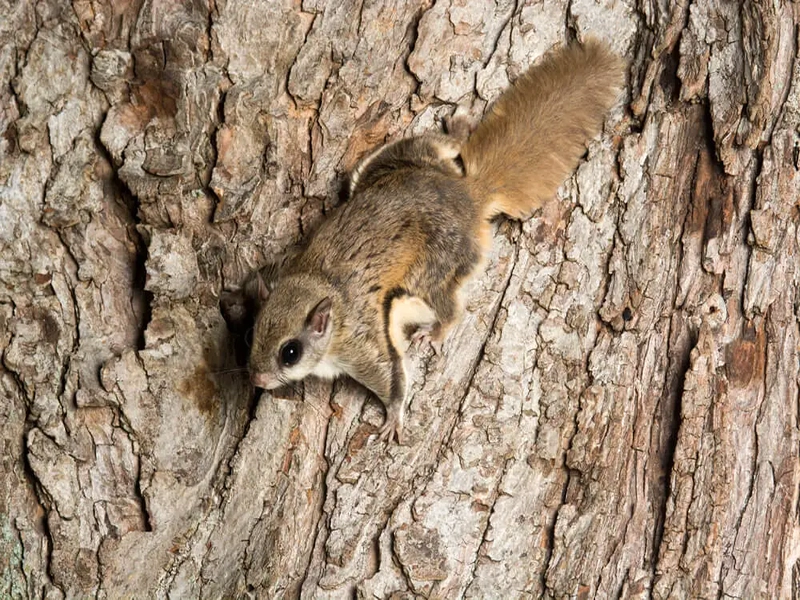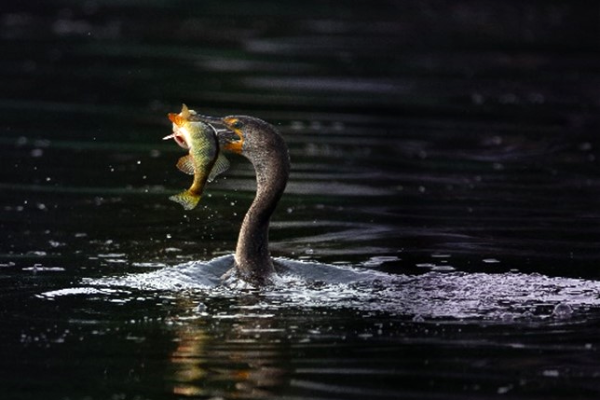
October 04, 2024| Education, Environment
By: Patrick Krudop
Welcome back to our monthly Creature Feature series, where we spotlight the wildlife around Lake Hopatcong. After exploring birds and fish, it’s time to delve into some of the lake’s small mammal inhabitants.
New Jersey is home to over 60 species of land-dwelling mammals, many of which can be found around Lake Hopatcong. Although these small creatures often get a bad rap, they play a crucial role in our ecosystem. Today, we’ll focus on these unsung heroes of the mammal world. After all, everyone loves an underdog, so let’s shine a light on some of New Jersey’s lesser-known small creatures: rodents!
The muskrat is a small mammal that can weigh up to four pounds and grow as long as 24 inches, much of that length due to its tail. In the wild, muskrats are excellent foragers and serve as prey for larger predators, including coyotes, foxes, owls, and hawks. They reproduce quickly, with up to 24 offspring per year spread across three litters, which helps maintain their population.
Muskrats have some unique features like their warm, double-layered fur, which allows them to stay comfortable in cold water, and their ability to hold their breath underwater for nearly 20 minutes. Their scaly, flat tail can sometimes lead people to mistake them for beavers. However, there are key differences: a beaver can weigh up to ten times more than a muskrat and has a horizontal paddle-shaped tail, while a muskrat has a vertical paddle tail.
 |
 |
The beaver is like the older sibling of the muskrat, sharing a similar appearance but significantly larger, weighing over 60 pounds. In fact, the beaver is New Jersey's largest rodent, the only rodent in the world to surpass it in size: the capybara. However, the only place you’ll spot a capybara around here is at the zoo.
One of the beaver's most distinctive features is its ever-growing front teeth. To keep them from getting too long, beavers gnaw on trees, sticks, and other woody materials, which helps grind down their teeth to a manageable size.
They use the materials they gnaw on to build their famous dams, which they build to raise the water level around their homes, making it easier for them to access food in the water and provide protection from predators. Another interesting feature of the beaver is their transparent eyelids, which allow them to see while submerged!
 |
 |
If you live in New Jersey, it’s nearly impossible to go a day without spotting a gray squirrel! Whether they’re scurrying across a lawn, climbing trees, munching on acorns, or distracting your dog, these little creatures are everywhere. These energetic rodents play an important role in the ecosystem, especially when it comes to seed dispersal for tree species. As winter approaches, they gather nuts, acorns, and seeds, burying them in various locations. It's not uncommon for them to forget about some of their hidden stashes, allowing the buried seeds to sprout into new trees.
Gray squirrels also use their fluffy tails for communication, much like how you can gauge a dog’s mood by its tail. They are known to have warning calls and signals to alert other squirrels if they see predators like hawks or foxes.
Like most rodents, squirrels are highly efficient breeders. They can begin reproducing as early as 5-6 months old and typically have two litters a year, resulting in up to 10 baby squirrels annually!
 |
 |
The chipmunk is one of the most common species of animals you’ll see in New Jersey, with their yearly population numbers fluctuating based on the availability of food. Just like squirrels, chipmunks are excellent seed dispersers for trees and plants. What makes chipmunks unique, however, is their ability to store a surprisingly large amount of food in their cheek pouches, which they transport to their extensive network of underground tunnels.
These tunnels are often complex, with multiple entrances. To avoid detection by predators, chipmunks will sometimes relocate or even camouflage the entrances over time. As winter approaches, chipmunks enter a torpid state in their dens. During this period, their breathing rate slows from 75 breaths per minute to around 20, and their body temperature drops from around 98°F to about 45°F. As the warmer weather returns in the spring and summer, they emerge from their dens and begin preparing once again for the next winter.
 |
 |
With his partner Bullwinkle by his side, Rocky could soar at supersonic speeds—but the flying squirrels of New Jersey aren’t quite as fast as their beloved cartoon counterpart. The southern flying squirrel, while not supersonic, can still fly at impressive speeds, reaching 30 miles per hour in a downward glide and 15 miles per hour in level flight.
Although they aren’t as commonly spotted as gray squirrels or chipmunks, flying squirrels are more prevalent than many people realize. You might wonder, “Why don’t I see them if they’re common?” The answer lies in their name: flying squirrels are usually found high up in the trees! Additionally, they are primarily nocturnal, so you would need to be outside at night and look up into the treetops to spot them.
The key to their gliding ability is a large flap of skin that stretches from their wrists to their ankles. This "wing" structure allows them to glide gracefully from branch to branch in search of acorns, nuts, berries, and other tasty treats.
 |
 |
At Lake Hopatcong, you may encounter some of our rodential residents, including the ones we talked about today! Whether you're a naturalist or simply curious about local wildlife, there's always something new to discover about the fascinating creatures that call Lake Hopatcong home. Every footprint, from tiny to large, helps shape the vibrant life of our lake. Even the smallest presence can have a big impact.
I hope you enjoyed learning about some of the native rodent species that thrive around the lake! If you have any wildlife photos from Lake Hopatcong, or if there’s a critter you’d like to see featured in an upcoming Creature Feature, please send your submissions to info@lakehopatcongfoundation.org. We look forward to sharing future editions of our Creature Feature!

September 05, 2024
Education, Environment

August 01, 2024
Education, Environment

October 21, 2024
Education, Environment